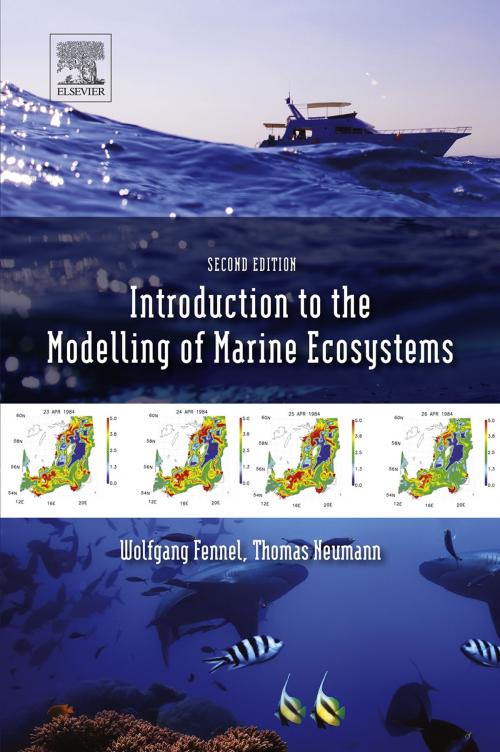Introduction to the Modelling of Marine Ecosystems
Nonfiction, Science & Nature, Science, Biological Sciences, Ecology, Nature| Author: | W. Fennel, T. Neumann | ISBN: | 9780444634153 |
| Publisher: | Elsevier Science | Publication: | September 18, 2014 |
| Imprint: | Elsevier Science | Language: | English |
| Author: | W. Fennel, T. Neumann |
| ISBN: | 9780444634153 |
| Publisher: | Elsevier Science |
| Publication: | September 18, 2014 |
| Imprint: | Elsevier Science |
| Language: | English |
Introduction to the Modelling of Marine Ecosystems, Second Edition provides foundational information on the construction of chemical and biological models – from simple cases to more complex biogeochemical models and life cycle resolving model components. This step-by-step approach to increasing the complexity of the models allows readers to explore the theoretical framework and become familiar with the models even when they have limited experience in mathematical modeling. Introduction to the Modelling of Marine Ecosystems shows how biological model components can be integrated into three dimensional circulation models and how such models can be used for numerical experiments.
- Covers the marine food web from nutrients, phytoplankton to higher trophic levels
- Presents information on the response of marine systems to external pressures as seen in physical biological models
- Provides an extended discussion of unifying theoretical concepts and of physical biological interaction
- Covers higher trophic levels, in particular multi-species fish models and their interaction with the biogeochemical models
- Offers MATLAB scripts on a companion website for many of the described example models to facilitate reproduction of the findings in the book and guide reader to writing own code
Introduction to the Modelling of Marine Ecosystems, Second Edition provides foundational information on the construction of chemical and biological models – from simple cases to more complex biogeochemical models and life cycle resolving model components. This step-by-step approach to increasing the complexity of the models allows readers to explore the theoretical framework and become familiar with the models even when they have limited experience in mathematical modeling. Introduction to the Modelling of Marine Ecosystems shows how biological model components can be integrated into three dimensional circulation models and how such models can be used for numerical experiments.
- Covers the marine food web from nutrients, phytoplankton to higher trophic levels
- Presents information on the response of marine systems to external pressures as seen in physical biological models
- Provides an extended discussion of unifying theoretical concepts and of physical biological interaction
- Covers higher trophic levels, in particular multi-species fish models and their interaction with the biogeochemical models
- Offers MATLAB scripts on a companion website for many of the described example models to facilitate reproduction of the findings in the book and guide reader to writing own code















